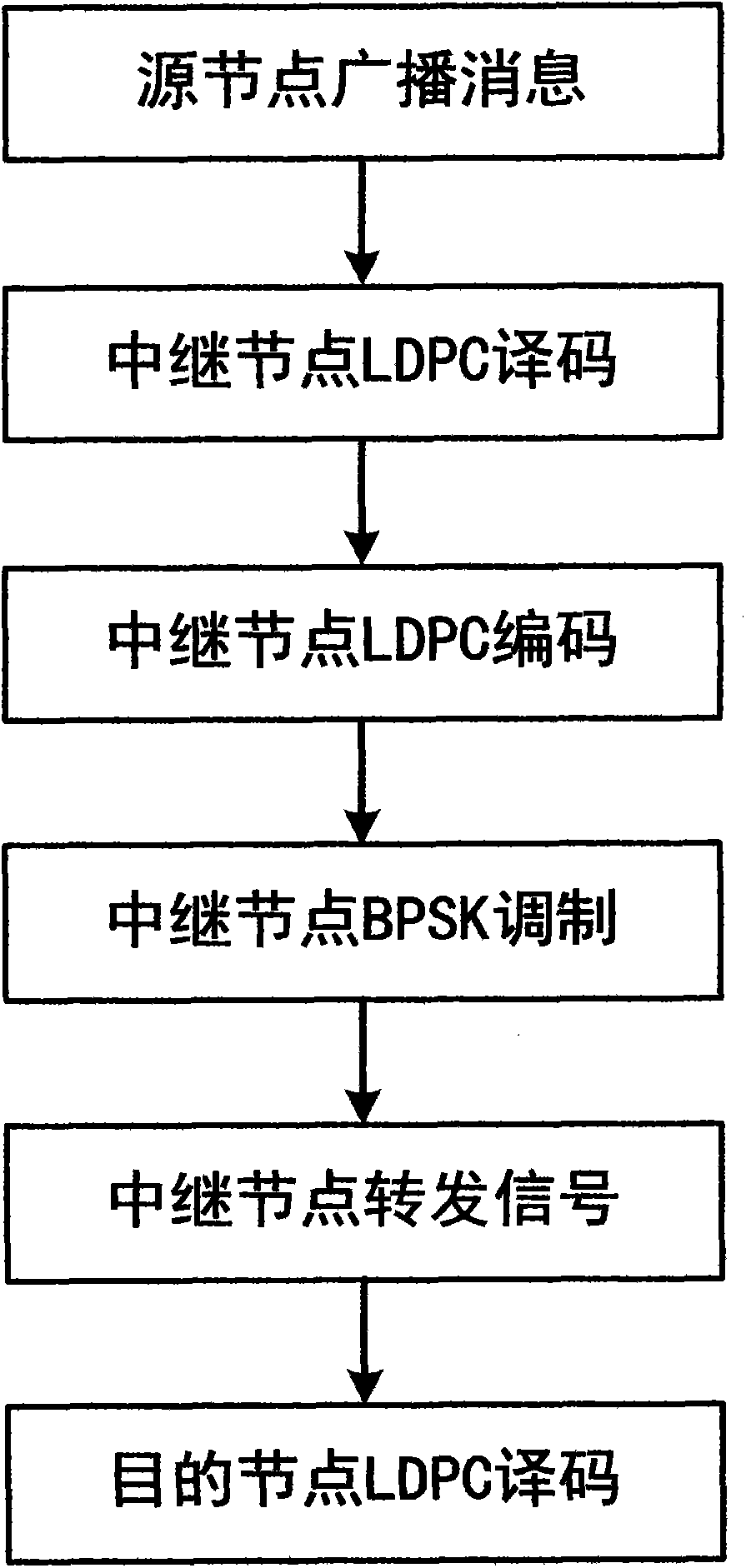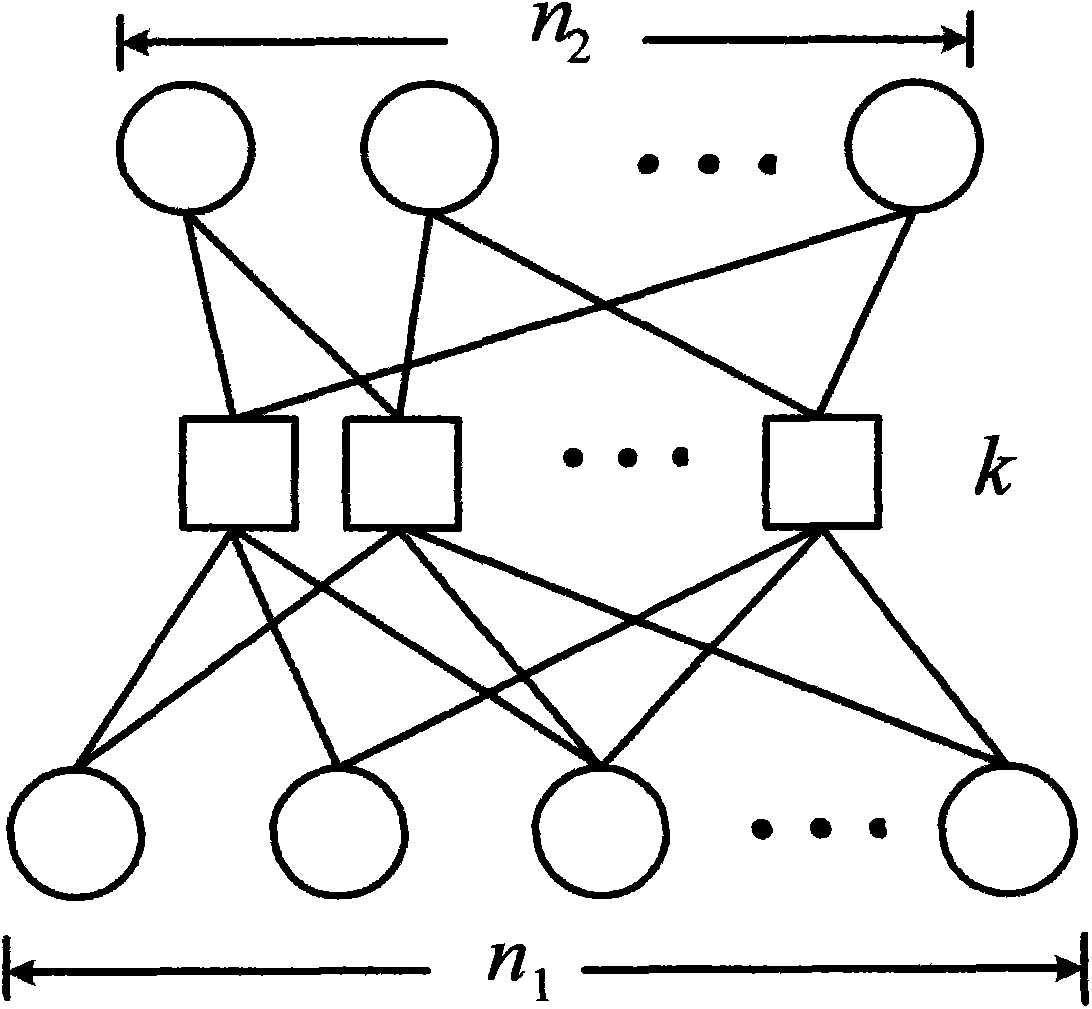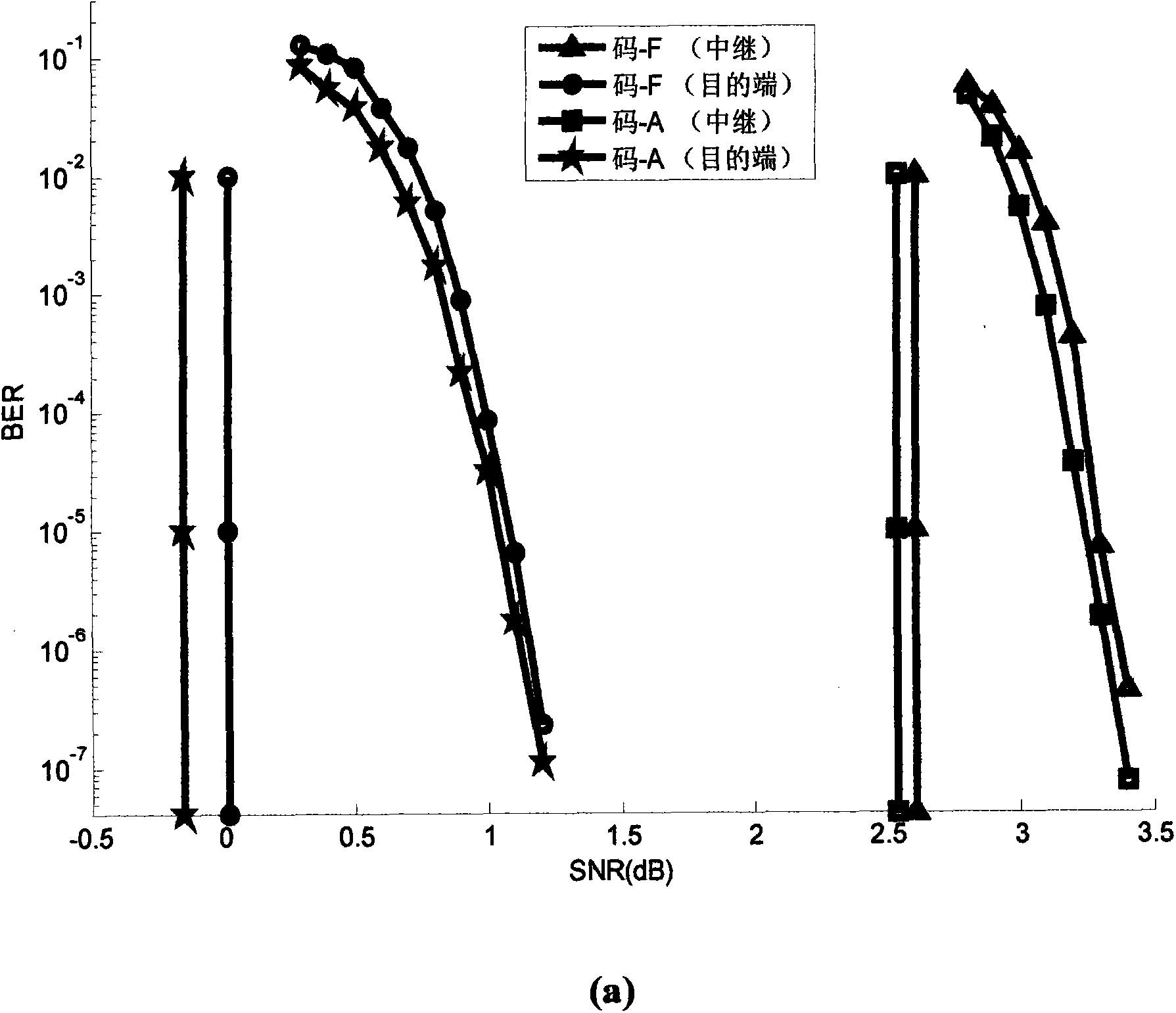Double-layer lengthened LDPC (Low Density Parity Check) code-based relay transmission method
An LDPC code, double-layer extension technology, applied in transmission systems, digital transmission systems, electrical components, etc., can solve the problem of difficult to achieve, without considering the overall optimization of low-density parity-check codes with double-layer extension, and without realizing the optimal two-part matrix. Excellent combination and other problems, to achieve the effect of low complexity and overcoming high complexity
- Summary
- Abstract
- Description
- Claims
- Application Information
AI Technical Summary
Problems solved by technology
Method used
Image
Examples
Embodiment Construction
[0033] The present invention will be further described below in conjunction with the accompanying drawings.
[0034] Refer to attached figure 1 , the steps of the present invention are as follows.
[0035] Step 1, the source node broadcasts the message:
[0036] The source node uses the double-layer extended structure designed by the overall optimization method to perform low-density parity-check encoding on its own original data, and obtains a length n 1 The underlying coding sequence and length n 2 The upper layer coding sequence, where n 1 and n 2 represent the number of variable nodes in the lower and upper subgraphs, respectively. The source node performs binary phase shift keying (BPSK) modulation on the coding sequence to obtain the modulation sequence, and broadcasts the modulation sequence to the relay node and the destination node.
[0037] Double-deck extended structure of the present invention refers to attached figure 2 , figure 2 The circles in represen...
PUM
 Login to View More
Login to View More Abstract
Description
Claims
Application Information
 Login to View More
Login to View More - R&D
- Intellectual Property
- Life Sciences
- Materials
- Tech Scout
- Unparalleled Data Quality
- Higher Quality Content
- 60% Fewer Hallucinations
Browse by: Latest US Patents, China's latest patents, Technical Efficacy Thesaurus, Application Domain, Technology Topic, Popular Technical Reports.
© 2025 PatSnap. All rights reserved.Legal|Privacy policy|Modern Slavery Act Transparency Statement|Sitemap|About US| Contact US: help@patsnap.com



